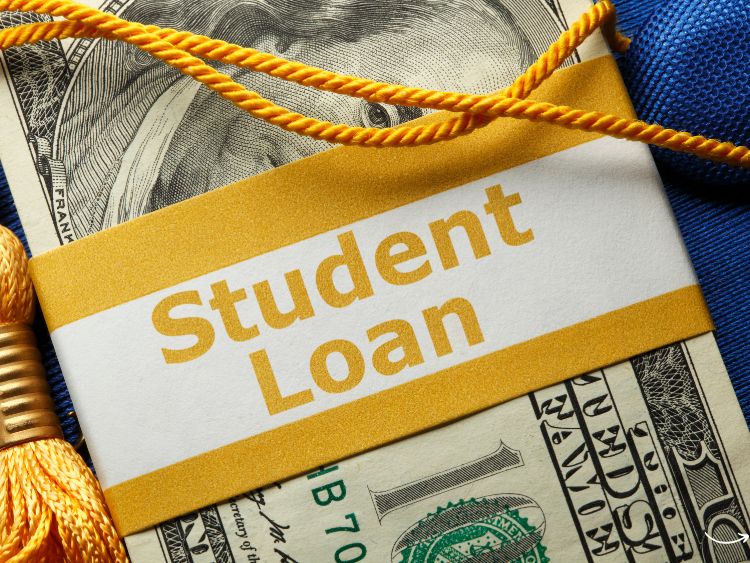Ever since President Joe Biden took office, student loan debt has been a hot topic of discussion. The mounting pressure from borrowers, activists, and politicians has driven significant debate on how to address this growing crisis. Biden’s administration has taken several steps toward alleviating the burden of student loan debt, but what does it all mean for current and future borrowers? Let’s dive into the details of Biden’s student loan debt policies and what they could mean for you.
The Scope of Student Loan Debt in America
Student loan debt in the United States is staggering. Over 44 million Americans owe a collective $1.7 trillion in student loans. This immense debt load has far-reaching implications, affecting everything from homeownership rates to retirement savings.
Key Statistics
- Total Student Loan Debt: $1.7 trillion
- Number of Borrowers: 44 million+
- Average Debt per Borrower: Approximately $37,000
This debt impacts not only individual borrowers but the broader economy as well. High levels of student debt can delay major life milestones, such as buying a home, starting a family, or saving for retirement.
Biden’s Approach to Student Loan Debt
Campaign Promises
During his presidential campaign, Biden made several promises regarding student loan debt. He pledged to:
- Cancel $10,000 of student loan debt per borrower.
- Simplify and expand income-driven repayment plans.
- Fix issues with Public Service Loan Forgiveness (PSLF).
- Increase funding for historically black colleges and universities (HBCUs) and minority-serving institutions (MSIs).
Actions Taken So Far
Since taking office, Biden’s administration has implemented several measures to address student loan debt:
- Pause on Federal Student Loan Payments: Extended the pause on federal student loan payments and interest accrual until September 2021.
- Targeted Debt Cancellation: Forgiven over $1 billion in student loans for borrowers defrauded by for-profit colleges.
- Public Service Loan Forgiveness (PSLF): Announced plans to overhaul the PSLF program to make it more accessible.
Proposed Reforms
Biden has also proposed several reforms to further tackle student loan debt:
- Income-Driven Repayment Plans: Simplifying the current system and reducing payments to 5% of discretionary income for borrowers earning less than $25,000 per year.
- Automatic Enrollment: Automatically enrolling borrowers in income-driven repayment plans.
- Bankruptcy Reform: Making it easier for borrowers to discharge student loans in bankruptcy.
The Debate Over Student Loan Forgiveness
Biden’s proposal to cancel $10,000 of student loan debt per borrower has sparked considerable debate. Supporters argue that it’s a crucial step in addressing the student debt crisis, while critics claim it doesn’t go far enough.
Arguments for Forgiveness
- Economic Stimulus: Forgiving student debt could provide a significant boost to the economy by increasing consumer spending.
- Alleviating Financial Strain: Debt forgiveness would relieve financial pressure on millions of borrowers, allowing them to invest in homes, businesses, and retirement savings.
- Addressing Inequality: Student loan debt disproportionately affects low-income borrowers and borrowers of color, making forgiveness a step towards addressing systemic inequality.
Arguments Against Forgiveness
- Cost: Critics argue that widespread debt forgiveness would be prohibitively expensive, potentially costing hundreds of billions of dollars.
- Moral Hazard: Some believe that forgiving student debt could create a moral hazard, encouraging future students to borrow more than they can afford.
- Targeted Relief: Others argue that forgiveness should be more targeted, focusing on those most in need rather than providing blanket relief.
Income-Driven Repayment Plans
One of the key components of Biden’s student loan debt plan is the overhaul of income-driven repayment (IDR) plans. Currently, there are multiple IDR plans, each with its own set of rules and requirements, leading to confusion and administrative burden for borrowers.
Proposed Changes
- Single IDR Plan: Biden proposes consolidating the various IDR plans into a single, simplified plan.
- Lower Payments: Reducing monthly payments to 5% of discretionary income for borrowers earning less than $25,000 per year, and capping payments for higher earners.
- Automatic Enrollment: Automatically enrolling borrowers in the new IDR plan, ensuring that those who need it most benefit from reduced payments.
Public Service Loan Forgiveness (PSLF)
The Public Service Loan Forgiveness (PSLF) program, which forgives the remaining balance on Direct Loans after 120 qualifying monthly payments under a qualifying repayment plan while working full-time for a qualifying employer, has been plagued by issues since its inception.
Current Issues
- Complexity: The program’s complexity has led to widespread confusion and a high denial rate for applicants.
- Administrative Errors: Many borrowers have been denied forgiveness due to administrative errors and mismanagement.
Biden’s Proposed Reforms
- Streamlining the Process: Simplifying the application process and ensuring borrowers receive accurate information about their eligibility.
- Expanded Eligibility: Expanding eligibility to include more types of loans and repayment plans, making it easier for borrowers to qualify.
Impact on Borrowers
Short-Term Relief
Biden’s measures, such as the extended pause on federal student loan payments and targeted debt cancellation, provide short-term relief for many borrowers. This immediate assistance helps those struggling with the economic impact of the COVID-19 pandemic.
Long-Term Solutions
Biden’s proposed reforms aim to provide long-term solutions to the student debt crisis. Simplifying repayment plans, expanding forgiveness programs, and addressing systemic issues in higher education funding are all steps towards a more sustainable solution.
FAQs
What is Biden’s plan for student loan debt?
Biden’s plan includes canceling $10,000 of student loan debt per borrower, simplifying income-driven repayment plans, and overhauling the Public Service Loan Forgiveness program.
How much student loan debt will Biden cancel?
Biden has proposed canceling $10,000 of student loan debt per borrower, but this proposal has not yet been implemented.
Will all borrowers be eligible for debt forgiveness?
Eligibility criteria for debt forgiveness have not been fully detailed, but Biden’s proposals aim to provide relief to a broad range of borrowers.
What changes are being made to income-driven repayment plans?
Biden proposes consolidating existing income-driven repayment plans into a single plan, reducing monthly payments to 5% of discretionary income for lower earners, and automatically enrolling borrowers.
How will the Public Service Loan Forgiveness program change?
Biden’s proposed reforms include simplifying the application process, expanding eligibility, and ensuring accurate information is provided to borrowers.
Conclusion
Biden’s student loan debt policies represent a significant effort to address the ongoing student debt crisis in the United States. While his administration has taken important steps towards relief, the debate over the best approach continues. For borrowers, understanding these policies and staying informed about potential changes is crucial. Whether through debt forgiveness, simplified repayment plans, or other reforms, the goal remains clear: to alleviate the burden of student loan debt and create a more equitable system for future generations.





